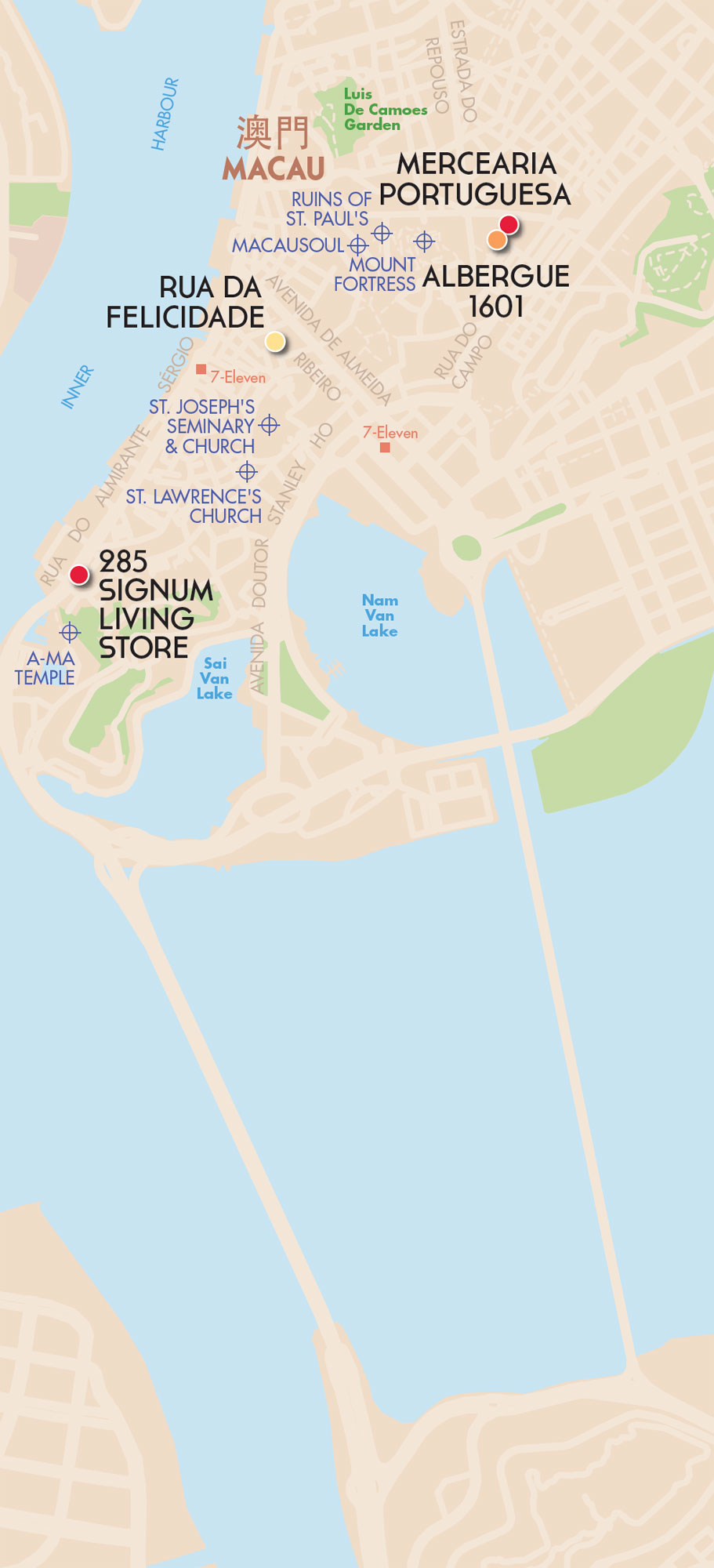
Sixty kilometres (37 miles) south-west of Hong Kong, Macau consists of a peninsula that narrowly borders China’s Guangdong province, and the islands of Taipa and Coloane, which have been connected by a section of casino-studded landfill known as the Cotai strip.
Much is said about Macau’s gambling dens, the most elaborate of which, the Venetian, is bigger than its Las Vegas counterpart. But the real drawcard to this former Portuguese colony and China’s only other Special Administrative Region is its seamless blend of Portuguese and Cantonese influences. An overnight trip here can reveal a tantalising combination of East meets West in the architecture, the cuisine, and the people and their unique culture.
SHOP
SHOP AND EAT
EAT
EAT AND DRINK

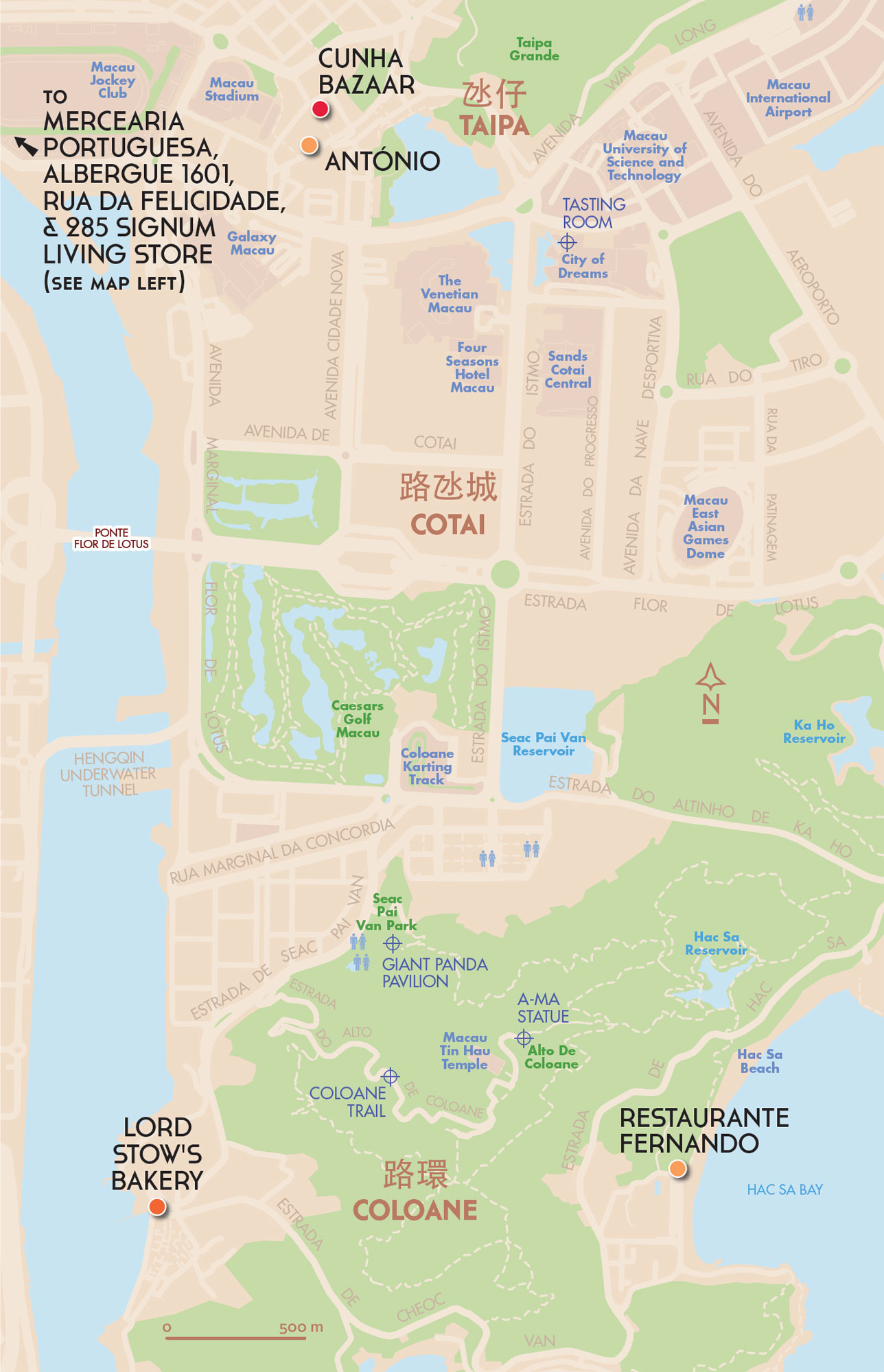
285 Rua do Almirante Sérgio, Macau City Centre
(853) 2896 8925
Open Mon–Sun 12–8pm
Standing in a row of crusty old shophouses complete with lanterns, window cages, exposed air-conditioner units and plantation shutters, this homewares-y, artsy, design-y shop is a surprisingly modish find. Tabletops and shelves are lovingly stocked with creative intrigues such as enamel cups and plates with abstract animal prints, glass bottles that look like the plastic variety, and old tea cups and saucers sliced in half then re-partnered with mismatched results. It’s not all whimsical though. Metallic pendant lights would make great gifts, as would the stationery and envelope openers, bold cushions and wooden toys for kids. Signum is big on promoting local artists whose work lines the walls.
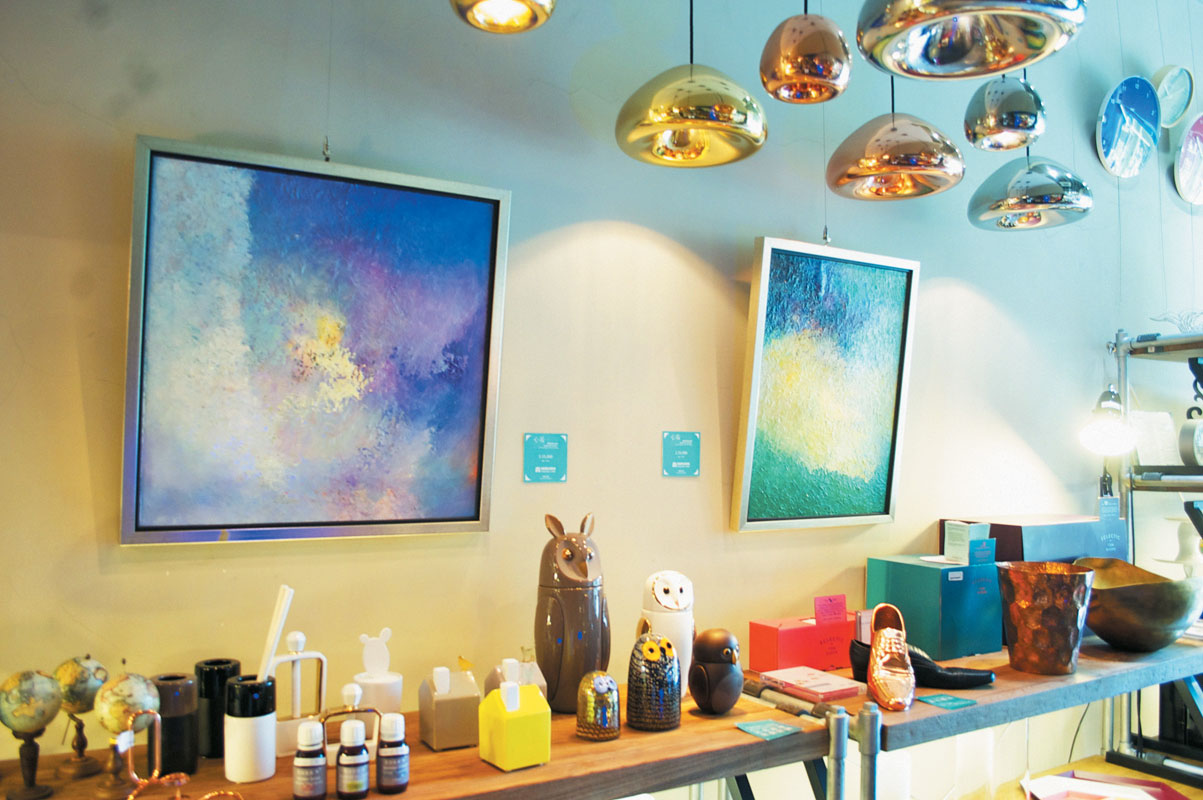
33–35 Rua do Cunha, Taipa
(853) 2882 7989
Open Mon–Sun 9.30am–10pm
Painted bright yellow and covered in murals, two-storey Cunha Bazaar has become a landmark in old Taipa, specialising in made-in-Macau merchandise. Downstairs, polished-concrete floors and nostalgic wallpaper provide the setting for Macau’s offbeat culinary treats – spicy dried fish, shrimp-flavoured peanuts and coconut egg rolls with shredded pork jerky, all packaged to take home. Upstairs a slightly kitsch space is dedicated to Macau’s iconic Soda Panda TV cartoon characters, with gimmicky T-shirts, postcards and almond cakes in retro boxes. Rua do Cunha’s traditional Macau morsels include almond cookies with pork filling, ginger candy and durian agar-agar pudding.
HOT TIP
For refined wines, leather couches, jazz and charcuterie, pop into MacauSoul (31A Rua de Sao Paulo), a music lover’s lounge in the city.
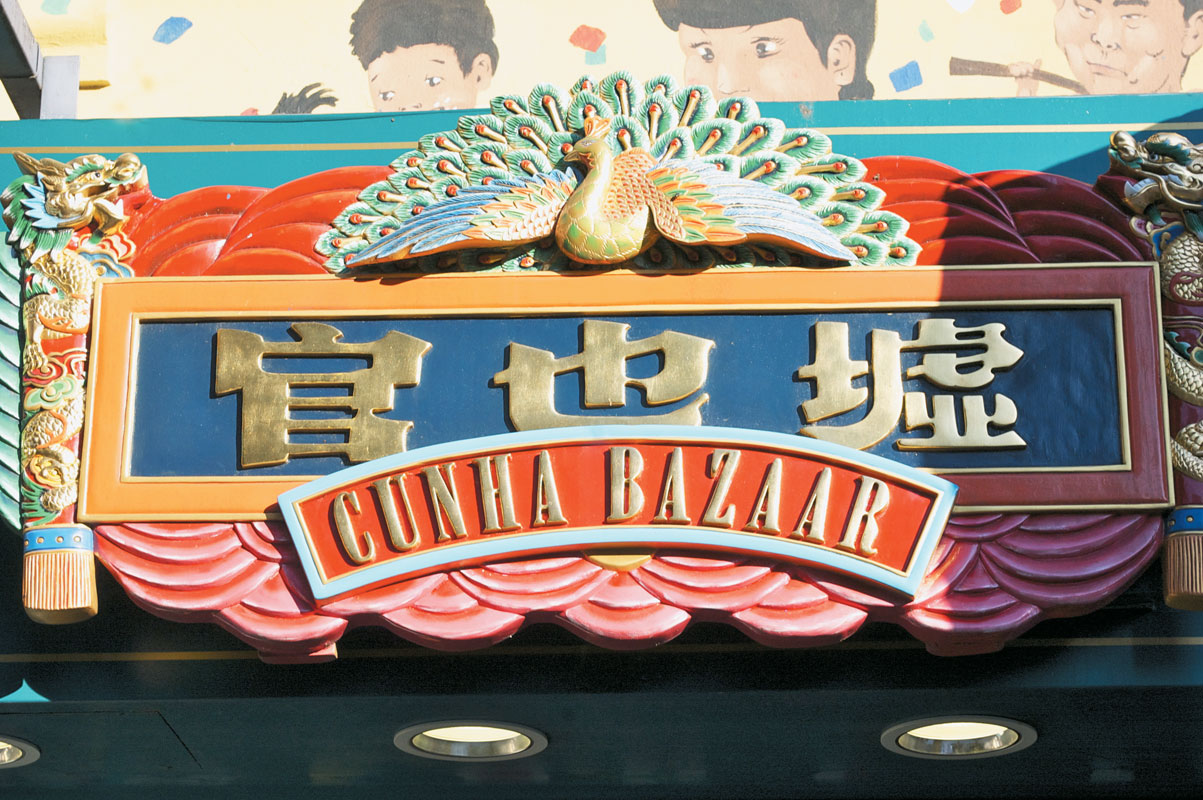
8 Calçada da Igreja de São Lázaro, Macau City Centre
(853) 2856 2708
http://merceariaportuguesa.com
Open Mon–Fri 1–9pm, Sat–Sun 12–9pm
Macau’s St Lazarus neighbourhood could well be called Little Lisboa, such is the character and beauty of its 16th-century cobbled streets and shuttered low-rise houses. In the middle of it is Albergue da Santa Casa da Misericórdia, an enchanting Portuguese square shaded by a camphor tree and bordered by a handful of businesses including Albergue 1601 and Mercearia Portuguesa (aka the Portuguese Corner Shop). A visit should induce some serious mother-country nostalgia. On old-school wooden shelves you’ll find spicy Portuguese sardines, bottles of olive oil, pickled green tomatoes, decadently wrapped chocolates and old-fashioned bon bons. Goods with a Macau touch include Portuguese tiles, retro hand soaps and handmade toys.
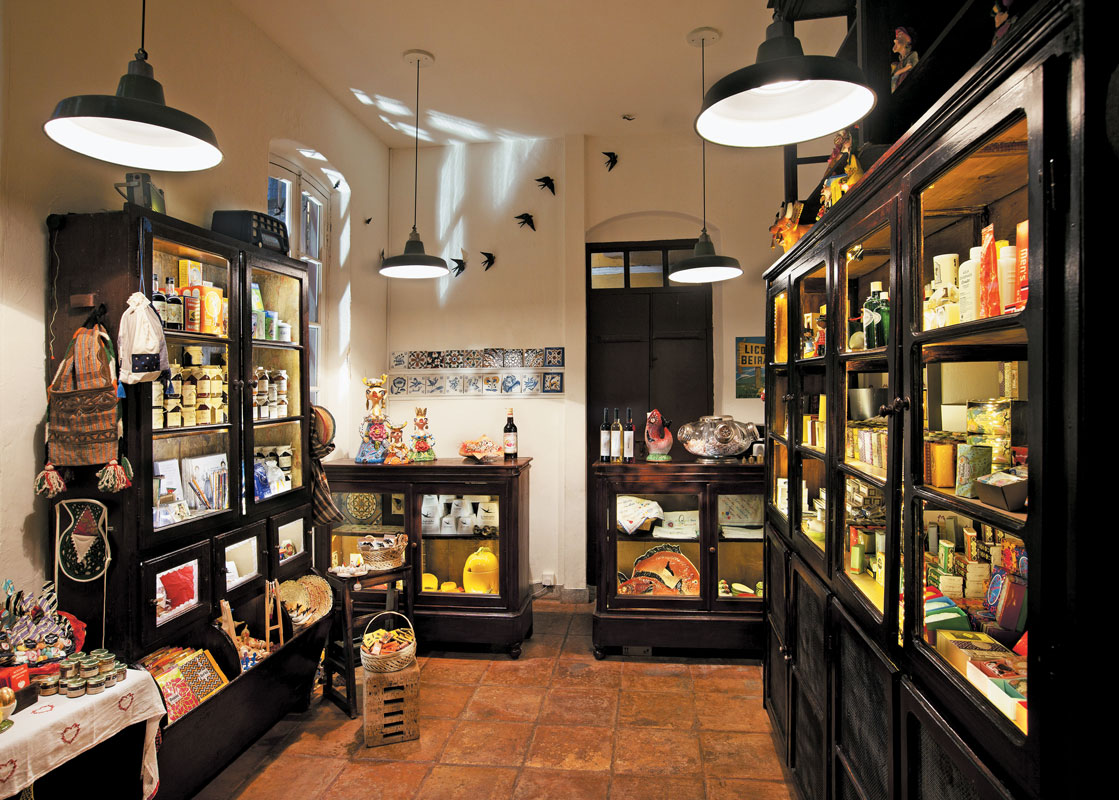
Macau City Centre
For whatever reason, this little street – one of old Macau’s most emblematic – has not made the World Heritage register. It will in time, no doubt. A couple of blocks off Avenida de Almeida Ribeiro and a five-minute walk from famous Senado Square, Rua da Felicidade is a thin strip of two-storey, tile-roofed tong lau (Chinese shophouses) with red shutters, doors and awnings. It was once a hangout for prostitutes, opium dealers, drinkers and gamblers, and thus the name translates to ‘Happiness Street’. The rejuvenated version is a serene place to amble past fish tanks, noodle restaurants, bubble teashops and bakeries where the homely smell of fresh-baked almond cookies fills the air.
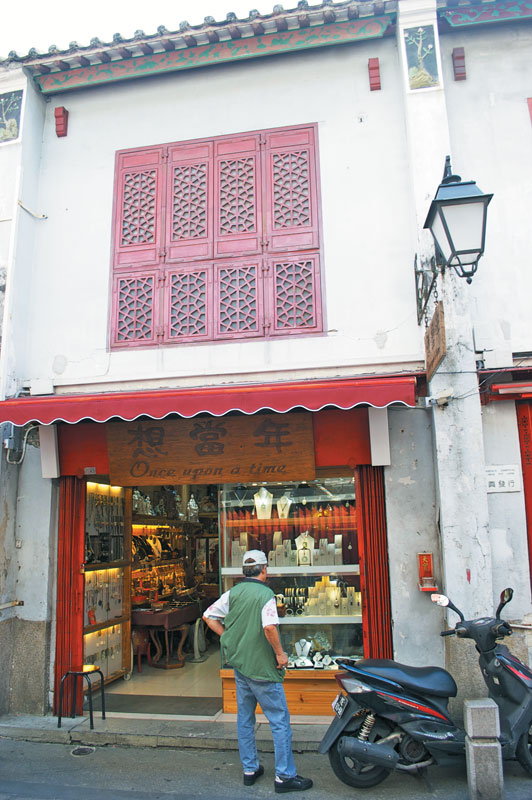
1 Rua do Tassara, Coloane
(853) 2888 2534
Open Mon–Sun 7am–10pm
In 1989, English expat Andrew Stow created a hybrid recipe between Portuguese pastel de nata and English custard tarts. To differentiate between the familiar local ‘egg tart’, resident Chinese people dubbed them ‘Portuguese egg tarts’. Stow’s recipe caught on in Macau and became an edible icon for visitors and locals alike. The company that produces the tarts, Lord Stow’s Bakery, has outlets in Hong Kong, Korea, Japan, Taiwan and the Philippines and sells 10,000 pieces on average each day. This bakery is the original, but there are four other local offshoots, two of which are nearby.
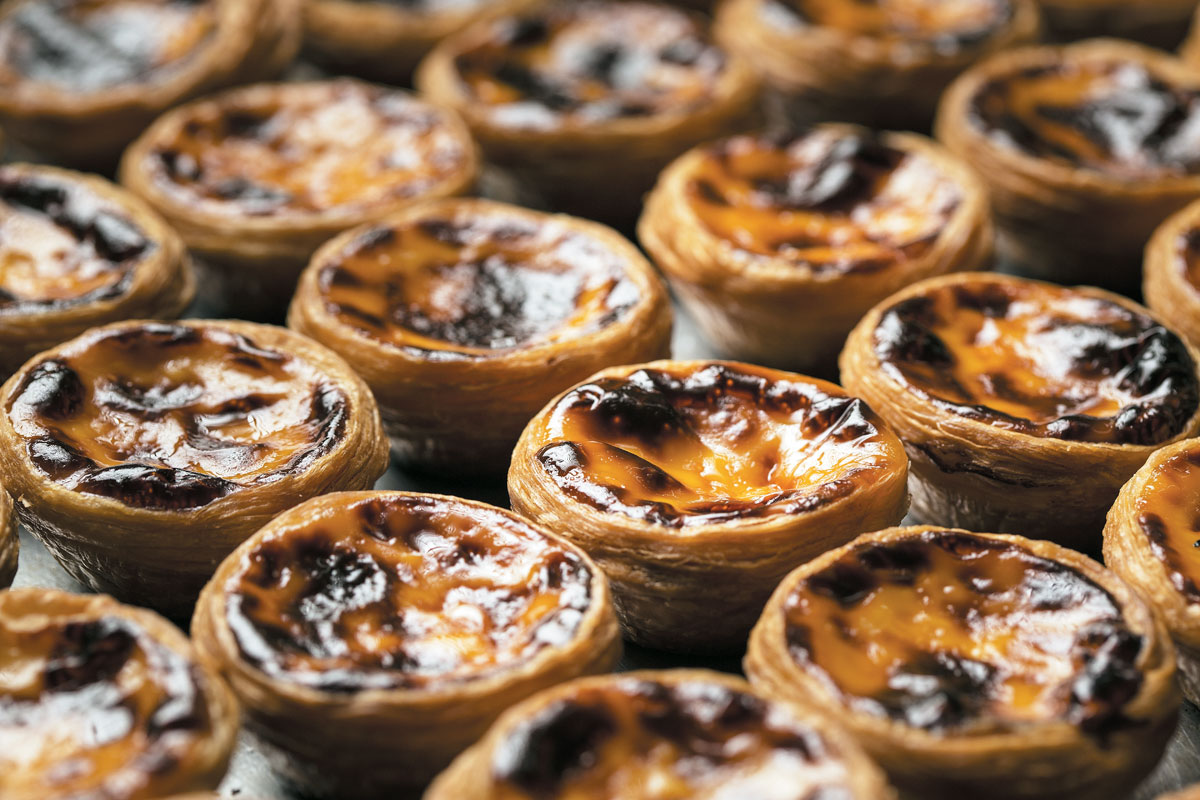
7 Rua dos Clerigos, Old Taipa Village, Taipa
(853) 2899 9998
Open Mon–Sun 12–3pm & 6–10.30pm
Only minutes away from the Cotai Strip, Old Taipa Village is an unexpected local gem with quaint alleys, renovated Chinese shophouses and colonial buildings all aglow with street lamps. Among the bars and restaurants is António’s, a Portuguese restaurant with exterior mosaic tiles and wooden wine kegs. António Coelho has won accolades for his authentic cuisine and excellent service (he waited on my table each time I visited). Signature dishes include goat’s cheese au gratin with olive oil and honey on toast for starters, and charcoal-grilled sardines with a potato and green-pepper salad for main. The wine list has a Euro bent.
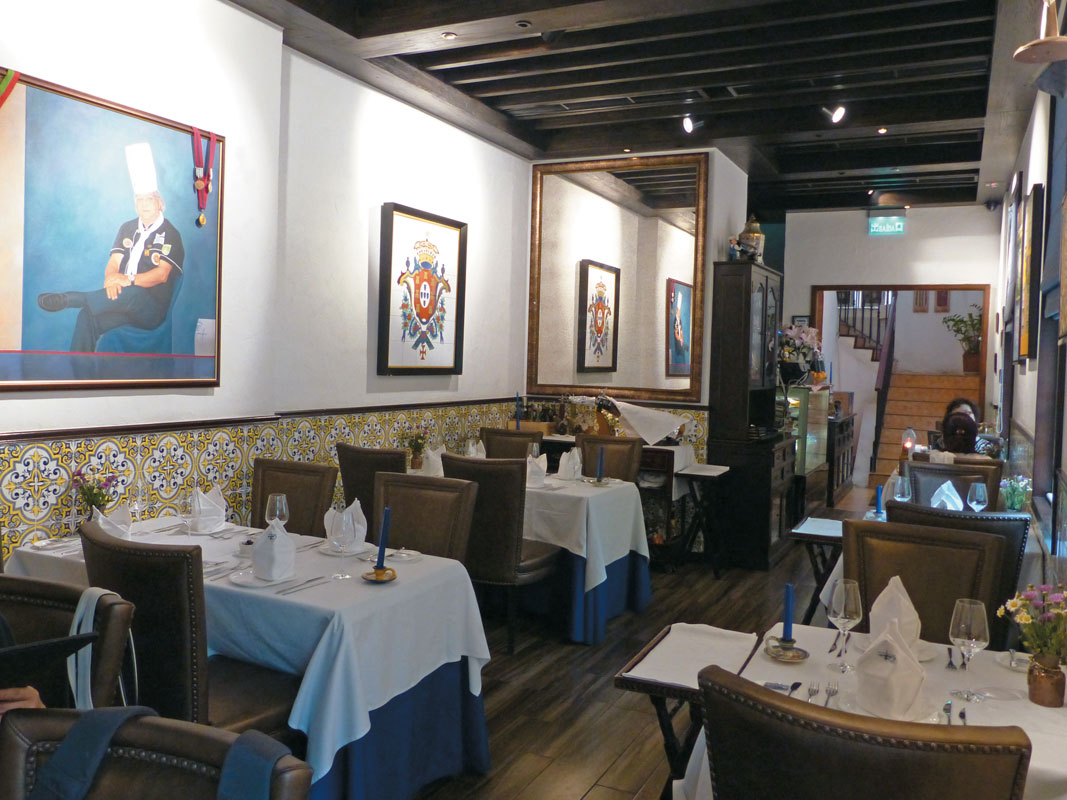
9 Praia de Hac Sa, Coloane
(853) 2899 9998
Open Mon–Sun 12–9.30pm
Hongkongers take daytrips to Macau just to have lunch at Fernando’s – it’s almost a rite of passage. This is Macau’s most famed restaurant, a no-fuss, no-reservations venue that promises a rare breed of casual dining. Locals tend to sit up front in a plain room with yellow bricks and louvre windows, but the rear is better. Out back there’s a beer garden and a faux rustic pavilion with ceiling fans, dark-wood beams, high ceilings and chequered tablecloths. Wherever you sit, the Portuguese fare stacks up, be it salty baccalau (cod) or stuffed octopus stew and a jug of sangria. Finish with a walk on the fine black sand of Hac Sa Beach.

8 Calçada da Igreja de São Lázaro, Macau City Centre
(853) 2836 1601
Open Tues–Thurs & Sun 12–11pm, Fri–Sat 12–11.30pm
Pull up an alfresco pew at Albergue 1601 and behold the European scenery: a mosaic cobbled square surrounded by two-storey Portuguese terraces with buttery yellow walls and wooden shutters. This beautiful restaurant taps into the Zeitgeist of Macau’s Portuguese history with its Portuguese-skewed Mediterranean food. Linger at lunch over caldo verde (potato and kale soup) and vieira ao forno (jumbo scallops with garlic and Portuguese sausage). In the evenings, indoor tables are laid with white linen and shimmering glassware. It’s very romantic. Pair roasted rack of lamb, chilli king prawns or grilled black pork with European wines from a cellar lining one wall.
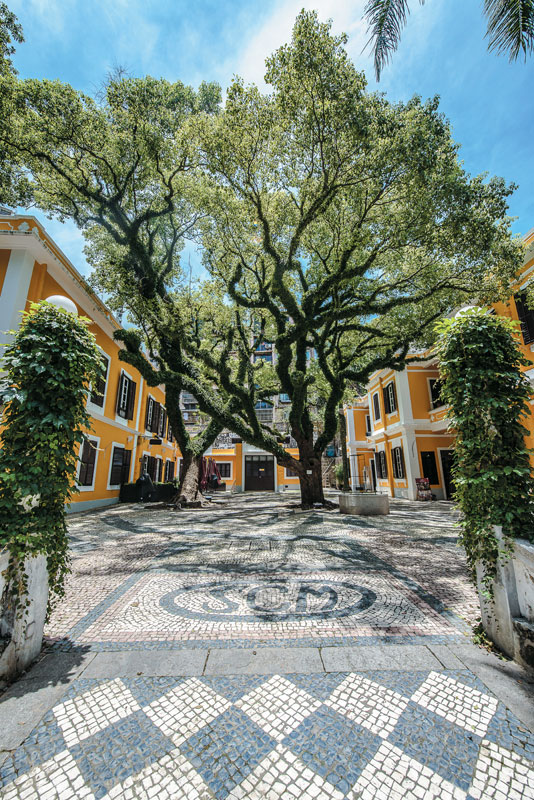
MEET THE HONGKONGER
KONSTANTIN BESSMERTNYI ARTIST
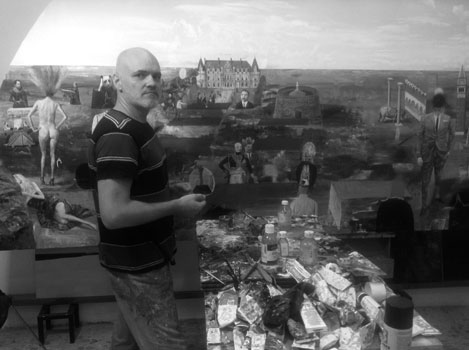
Russian-born Konstantin Bessmertnyi grew up in Blagoveshchensk, near the China border, and completed his Masters at the Vladivostok Art Academy. After success working as an artist, he came to Macau by invitation from the Macau government in 1992. ‘I never imagined I would settle down in a studio in this remote Portuguese colony’, he said. But he did.
Why did you settle in Macau?
There was something captivating and mysterious that always kept me in Macau, despite many other opportunities in other places. Today most of my inspiration comes from here. I see this place as a miniature ‘sin city’ with a very distinct social pyramid that displays all possible human actions in extreme conditions.
What’s your take on the city?
The city is rapidly changing into the gambling capital of the world and much of the attention has been focused on improving all the industries that accompany gambling. However, there is a handful of islands that are trying to resist the changes by retaining their culture.
What are your favourite Macau experiences?
I am often in Europe and have eaten many great meals, but one overrides all others: an extravagant meal in the Tasting Room at City of Dreams on the Cotai strip (Avenida de Cotai, see map). I have favourite hikes too. Visitors should attempt parts of the Coloane Trail, which begins on Estrada do Alto de Coloane and meanders around the island.